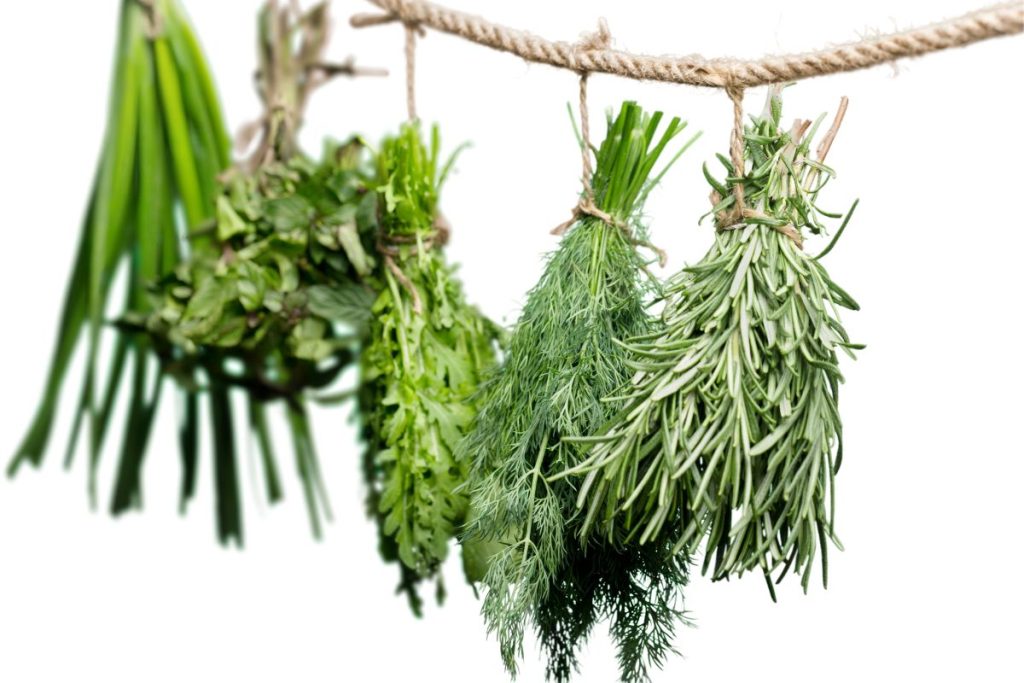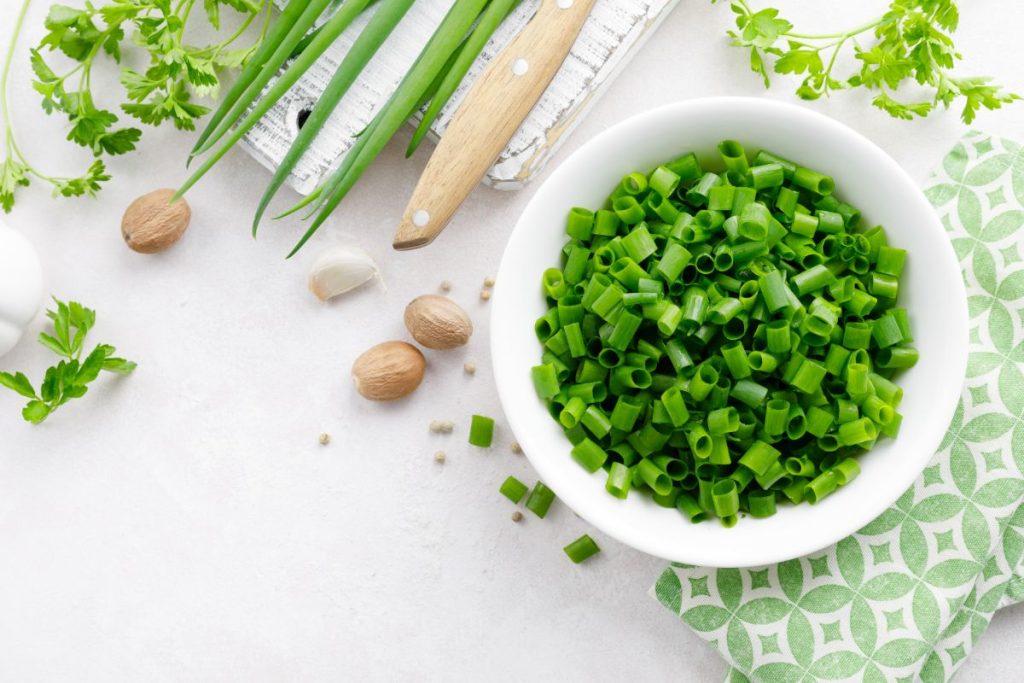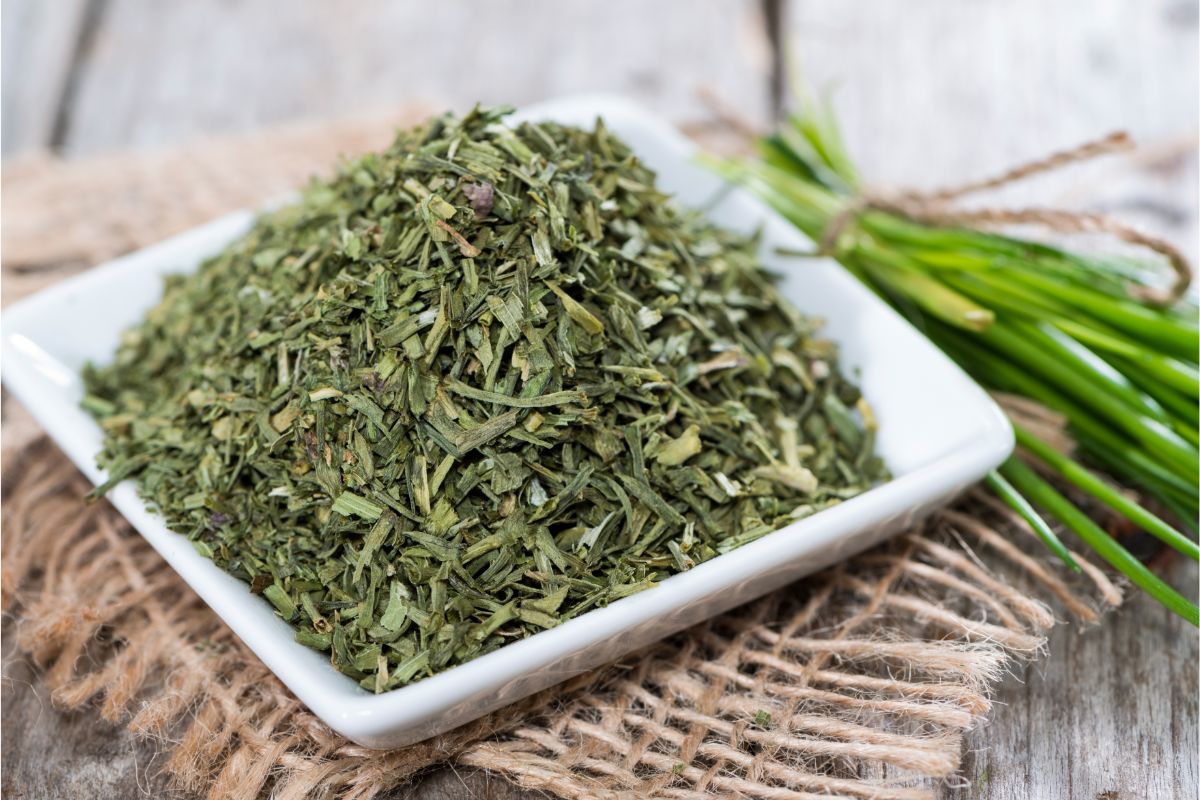To dry chives naturally in the air, hang rinsed chives upside down in bunches in a warm, dry place for 1-2 weeks. You can cover the herbs with a muslin cloth to keep away dust and pests. To dry chives in a food dehydrator, set the temperature to 95-125°F and dehydrate for 1-4 hours.
Table of Contents
What is the Best Way to Dry Chives?
Air drying is the best way to dehydrate chives to retain optimum flavor and aroma. This method eliminates the need for direct heat, which minimizes the risk of burning the chives or causing flavor loss.
How Do You Dry Chives Naturally?
Air-drying chives is simple and helps them retain their natural oils and flavor. Follow these step-by-step instructions for perfect, air-dried chives:
- Harvest chives early in the morning after the dew dries to maximize flavor. If you obtain chives from a grocery store, pick the freshest ones with an even green color and without withered leaves.
- Rinse the fresh chives in cool water and dab off the excess water droplets with paper towels.
- Separate and tie the chives into several bunches near the bases of the stems with rubber bands or twine. Tie no more than 20 sprigs per bunch. Make the knot tight so the leaves stay in place even after shrinking.
- Hang the bunches upside down in a warm, dry place shielded from direct sunlight.
- If preferred, loosely wrap a muslin or mesh bag around each bundle to keep bugs and dust away. The mesh also traps any leaves that may fall off of loose bundles during the drying process. A paper bag with a few holes for air circulation serves the same purpose.
- Leave the chives to dry for 1-2 weeks. The drying time will depend on humidity levels, the size of the bunches, and the amount of water in the chives.
- When air-drying chives, check the leaves every 3-4 days for dryness or signs of molding. The chives will be crumbly when fully dried.
- Crumble or chop up the fully dried chives and store them in airtight herb containers at room temperature in a cool, dry, dark area.

How to Dry Chives in a Food Dehydrator
Drying chives in a food dehydrator is much faster than air drying and more energy-efficient than in an oven. Here’s how to dehydrate chives in a dehydrator:
- Select the best fresh chives with an even green color. Remove any withered or dead leaves. If they have flowers, cut off the purple chive blossoms to dry them separately or use them fresh in a salad or as a garnish.
- Rinse the chives under cool water and remove the excess water with paper towels.
- Cut the chives into small pieces around 1/4-inch thick using a sharp knife or kitchen scissors.
- Line dehydrator trays with parchment paper to keep the chopped chives from falling through the mesh. Spread the pieces on the trays in single layers.
- Cover the loaded trays with dehydrator screens or parchment paper to anchor the chives during the drying process.
- Load the dehydrator and dehydrate the diced chives at 95-125°F for 1-4 hours until crumbly.
- Check on the drying progress every hour. When they look pale and dry, take out a few chive pieces and cool them to room temperature to test for dryness.
- Once dried, cool the fully dehydrated chives to room temperature.
- Condition the dried chives in airtight containers for up to 7 days. If they don’t stick together or produce moisture, continue with long-term storage.
- Keep the dried herbs in airtight containers in a cool, dark, dry place.

Is It Recommended to Dry Chives in an Oven?
Drying chives in an oven is risky because most ovens do not have a low enough temperature for drying herbs. It’s also risky leaving the oven door open to enhance air circulation and moisture removal.
Should Chives be Washed Before Drying?
It is necessary to wash chives before drying them, whether you bought them from the store or harvested them from your herb garden. Cleaning the herbs helps remove bugs, dust, dirt, and pesticides to ensure they are safe to eat.
When washing the chives, take care not to crush them. Injuring the leaves causes patches that may cause molding and rotting, especially if your preferred drying method is hanging them in the air.
What Temperature is Needed to Dry Chives?
Like other fresh herbs such as mint leaves, oregano leaves, and dill, chives are delicate and require drying at low temperatures over a long duration.
Try drying them using these drying methods at the temperature ranges indicated below:
| Drying Method | Temperature |
| Air-drying | 68°F – 74°F |
| Food dehydrator | 95°F – 125°F |
| Oven-drying | 150°F – 170°F |
| Sun-drying | 86°F – 95°F |
What are the Benefits of Drying Chives?
You can enjoy the following benefits when you dehydrate chives:
- Dried chives are more concentrated than fresh ones, and recipes need less.
- Dried chives last longer than fresh chives.
- It’s easy to rehydrate dried herbs and use them in stews, soups, pesto, scrambled eggs, chive butter, and homemade seasonings.
- Storing dried chives is easier as they take up less space after crumbling.

Best Way to Store Dried Chives
Dried chives should be stored in airtight glass containers like mason and glass jars when kept at room temperature in a cool, dry, dark place. The storage location should be away from sources of heat, humidity, and direct sunlight.
What is the Shelf Life of Dried Chives?
The shelf life of dried chives is 1-3 years at room temperature in airtight containers kept in a cool, dry place like the pantry or kitchen cupboard. Store chives in vacuum-sealed containers for a shelf life of up to 3 years at room temperature.
It’s best to use dried herbs in 3-6 months for the best flavor. DIY-dried chives start to lose their aroma and flavor after six months.

